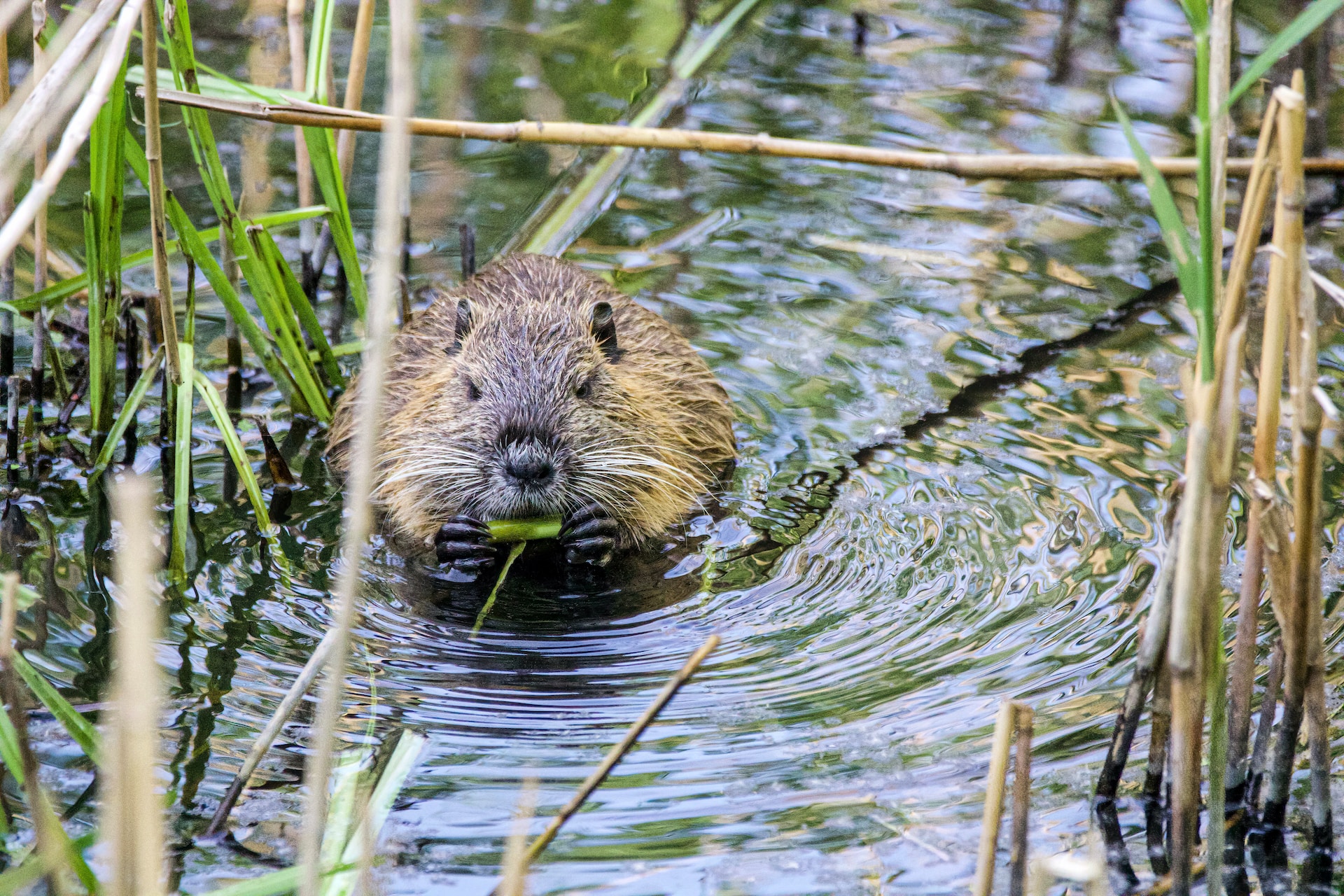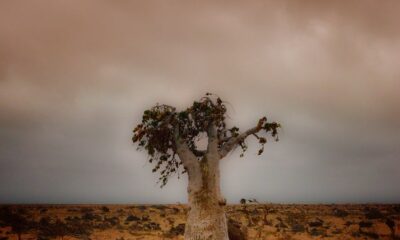Nature and Wildlife
Exploring the Hidden World of Forest Fungi

When most people think of the forest, they envision towering trees, lush undergrowth, and a haven for wildlife. But hidden beneath the surface lies a mind-boggling network of organisms that play a crucial role in maintaining the balance of nature. Welcome to the enchanting world of forest fungi – the unsung heroes of the wilderness.
Fungi, often overlooked and underappreciated, form a complex web of interconnected relationships within the forest ecosystem. These incredible organisms play a vital role in nutrient cycling, decomposition, and symbiotic partnerships with plants. In fact, without fungi, the forest as we know it would cease to exist.
One of the most fascinating aspects of forest fungi is their ability to form intricate partnerships with trees. Known as mycorrhizal associations, these symbiotic relationships are mutually beneficial for both parties involved. Fungi provide essential nutrients, such as phosphorous and nitrogen, to the trees, while the trees supply sugars produced through photosynthesis to the fungi.
This underground exchange not only enhances the growth and resilience of individual trees but also strengthens the overall ecosystem. Studies have even shown that healthy mycorrhizal networks can help trees communicate and share resources with their neighbors, increasing their collective ability to withstand stressors like drought and disease.
Another intriguing group of forest fungi is the decomposers. Just as the name suggests, these fungi play a vital role in breaking down organic matter, such as fallen leaves, dead animals, and even wood. Through the process of decomposition, fungi release nutrients back into the soil, making them available for uptake by plants and supporting the cycle of life in the forest.
One particular type of decomposer fungi that has garnered attention in recent years is the medicinal mushroom. Traditional healers and modern researchers alike have been captivated by the potential health benefits offered by these fungi. From boosting the immune system to fighting cancer, medicinal mushrooms have been used for centuries in various cultures around the world.
While some medicinal mushrooms are hunted and harvested in the wild, others are now cultivated in controlled environments to ensure their availability as a natural health resource. The potential for discovering new medicinal compounds within forest fungi is vast, and ongoing research is shedding light on the incredible healing properties hidden within these organisms.
Beyond their ecological and medicinal significance, forest fungi also contribute to our everyday lives in unexpected ways. You may be surprised to learn that several types of fungi are used in the production of antibiotics, enzymes, and even food. From the antibiotic penicillin, derived from the Penicillium fungus, to the culinary delicacy that is the truffle, fungi have permeated various aspects of human society.
As we continue to explore the depths of the forest and unravel the mysteries of forest fungi, it becomes clear that these organisms are far more than mere mushrooms popping up after a rainstorm. They are the unsung heroes, quietly working underground to sustain the delicate balance of nature.
So, the next time you find yourself walking through a sun-dappled forest, take a moment to appreciate the hidden world beneath your feet. Among the fallen leaves and decaying wood, a secret society of forest fungi is at work, shaping the destiny of the wilderness and offering us a glimpse into the wonders of the natural world. Embrace this deep dive into the secret lives of forest fungi, and let the enchantment of their existence awaken a newfound admiration for the intricate beauty that lies within the heart of the forest.

Nature and Wildlife
Extreme Living: Wildlife Survival in the Himalayas

The Himalayas, spanning across five countries, are home to a diverse range of wildlife that have adapted to the region’s high altitude, harsh climate, and rugged terrain. In this article, we will explore some of the remarkable species that thrive in the Himalayas and the adaptations that have allowed them to survive and flourish in this extreme habitat.
The snow leopard, one of the most iconic species found in the Himalayas, is perfectly adapted to life at high altitudes. Its thick fur provides insulation against the cold, and its large paws act as natural snowshoes. Snow leopards are expert climbers, with powerful limbs and a long, flexible tail that aids in balance. Their exceptional camouflage allows them to blend seamlessly into their rocky surroundings, making them incredibly difficult to spot. Snow leopards are primarily found at altitudes of 9,800 to 17,000 feet and are known to inhabit areas with steep cliffs and rocky outcrops, which provide them with excellent vantage points for hunting their prey.
Another remarkable species found in the Himalayas is the Himalayan tahr, a large ungulate closely related to the wild goat. The tahr is well-suited to life at high elevations, with its sturdy legs and cloven hooves providing excellent grip on the steep, rocky terrain. Their dense, woolly fur provides insulation against the cold, and their impressive agility allows them to navigate the treacherous slopes with ease. Himalayan tahrs are typically found at elevations of 8,200 to 16,400 feet and are known to inhabit steep, rocky cliffs and grassy slopes.
The endangered red panda, a small arboreal mammal found in the temperate forests of the region, is another remarkable species found in the Himalayas. Red pandas are expert climbers, with sharp claws and a long, bushy tail that aids in balance. Their thick fur provides insulation against the cold, and their unique ability to rotate their ankles allows them to descend trees headfirst. Red pandas are primarily found at altitudes of 7,200 to 15,700 feet and are known to inhabit areas with dense bamboo growth, which makes up the majority of their diet.
In addition to these larger species, the Himalayas are home to a diverse array of smaller mammals, birds, and reptiles. The Himalayan marmot, a large ground-dwelling squirrel found at elevations of 11,500 to 18,000 feet, is one such species. These social animals live in colonies and have adapted to the harsh climate by hibernating during the winter months. The Himalayas are also home to over 500 species of birds, including the Himalayan monal, a brightly colored pheasant that is the national bird of Nepal. These birds are found at elevations of 8,200 to 15,100 feet and are known for their impressive courtship displays.
The Himalayas are a treasure trove of biodiversity, with countless species that have evolved unique adaptations to survive in this harsh environment. As climate change and human activity continue to impact these fragile ecosystems, it is crucial that we work to protect and preserve these incredible creatures and their habitats for future generations. By raising awareness of the unique wildlife found in the Himalayas and the challenges they face, we can help to ensure the continued survival of these remarkable species.
Nature and Wildlife
Exploring the Intricate Interdependence Between Species

Out here in the wild, the relationships between different species aren’t just fascinating; they’re essential. It’s a dance of survival, a delicate balance that keeps the natural world humming along. This interconnectedness, this mutual dependence, is what we call symbiosis.
Now, the term symbiosis might sound like some highfalutin scientific jargon, but it’s not as complicated as it seems. Simply put, it’s a close and long-term interaction between two different species. And boy, does it make for some interesting dynamics.
Take the African oxpecker and the Cape buffalo, for instance. The oxpecker, a small bird with an appetite for ticks and other parasites, finds a veritable buffet on the buffalo’s back. In return, the buffalo gets a free grooming service. This mutual benefit is what we call mutualistic symbiosis.
But it’s not always a two-way street of benefits. Sometimes, one species benefits at the expense of another. This is what we call parasitic symbiosis. A good example is the relationship between a tick and a human. The tick feeds on the human’s blood for survival and growth, while the human, well, gets a nasty bite and maybe a disease or two.
Then there’s commensalistic symbiosis, where one species benefits and the other is neither harmed nor benefited. Picture barnacles attaching themselves to a whale’s skin. The barnacles get a free ride and plenty of food as the whale travels, while the whale doesn’t seem to mind their presence.
These symbiotic relationships are more than just interesting trivia; they’re a testament to nature’s ingenuity and resilience. They’re a lesson in adaptation and survival, a lesson that we humans can learn a lot from.
Let’s look closer at the honeybee and the flower, a classic example of mutualistic symbiosis. The honeybee collects nectar from the flower, getting the food it needs. In the process, it transfers pollen from one flower to another, aiding in the flower’s reproduction. It’s a win-win situation, but more than that, it’s a testament to how survival often depends on cooperation and mutual benefit.
Now, you might be wondering, what’s all this got to do with survival in the wild? Well, understanding symbiosis can give us a deeper appreciation of nature’s balance and how each creature, no matter how small, has a role to play. It reminds us that we’re part of a larger ecosystem, and our survival depends on its health and stability.
Moreover, it can guide us in our survival strategies. Just like the oxpecker and the buffalo, we can form alliances and partnerships that enhance our survival. For instance, we can learn to identify and use plants that repel harmful insects or attract beneficial ones. We can understand how certain animals can signal the presence of water or warn us of predators.
In essence, the principle of symbiosis is a powerful tool in our survival toolkit. It teaches us to see the interconnectedness of all life, to respect the balance of nature, and to harness these relationships for our survival and well-being.
So, next time you’re out in the wild, take a moment to observe the intricate dance of symbiosis. Watch the birds and the bees, the flowers and the trees, and remember that we’re all in this together. And in this grand dance of survival, every step, every interaction, every relationship matters.
Remember, it’s not just about surviving; it’s about thriving. And understanding symbiosis, understanding our place in the ecosystem, is a big part of that. So, keep exploring, keep learning, and keep surviving. Because out here in the wild, knowledge is more than power; it’s survival.
Nature and Wildlife
The Role of Beavers in Shaping Our Freshwater Ecosystems

As Jack Morgan, I’ve spent countless hours in the great outdoors, observing and interacting with the natural world in ways most people can only dream of. During my explorations, I’ve come across one creature that never fails to impress me with its industrious nature and significant impact on our freshwater ecosystems – the beaver.
Nature’s architects
Beavers, often overlooked, are nature’s architects. With their sharp teeth and strong jaws, they fell trees and build dams, creating ponds and wetlands. This might seem like simple animal behavior, but the role of beavers in shaping our freshwater ecosystems is far more profound than you might think.
First and foremost, beaver dams create a habitat for a plethora of wildlife. The ponds and wetlands that result from their hard work provide a home for fish, birds, insects, and various mammals. By creating these habitats, beavers increase biodiversity, which is crucial for a healthy ecosystem. It’s a ripple effect; the more diverse an ecosystem is, the more resilient it becomes to changes and disturbances.
Water management
Furthermore, these dams play a critical role in water management. They slow down the flow of water, reducing the risk of floods downstream during heavy rains. The water in beaver ponds is stored and then slowly released, which can also help maintain water levels during dry periods. This function is not only beneficial for the wildlife that depends on these water sources but also for us humans who often live downstream.
Beaver dams also act as natural filters. As water passes through the dam, it leaves behind sediment and pollutants. This process improves water quality by trapping harmful substances, which can have a significant impact on the health of downstream ecosystems.
Moreover, the role of beavers extends to combating climate change. Wetlands are known as carbon sinks, meaning they absorb more carbon than they release. By creating and maintaining wetlands, beavers help in sequestering carbon, thus contributing to the mitigation of climate change.
It’s important to note, however, that beavers are not always seen in a positive light. Their tree felling and dam building can sometimes conflict with human activities. For instance, they can flood agricultural lands or roads, and their taste for certain trees can be problematic in managed forests. But these conflicts offer opportunities for us to adapt and innovate, to find ways to coexist with these industrious creatures.
Understanding and appreciating the role of beavers in our freshwater ecosystems is crucial. These animals contribute significantly to the health and resilience of these ecosystems. The ponds and wetlands they create increase biodiversity, manage water flow, improve water quality, and help combat climate change.
So, next time you come across a beaver dam, take a moment to appreciate the profound impact these creatures have on our environment. Remember, survival isn’t just about adapting to nature; it’s about understanding and respecting it. And in the grand scheme of things, we could learn a lot from the humble beaver. Their instinct to shape their environment for the better, to work hard for the benefit of their community, is a lesson we could all do well to remember.
As we journey through the wild terrains of our world, let’s not forget to acknowledge and appreciate the role each creature plays in the intricate web of life. From the industrious beaver to the tiniest insect, each has a part to play, each contributes to the balance of our ecosystems. The survival and resilience of our planet depend on this balance, and it’s our responsibility to protect and preserve it.
-

 Tactical1 year ago
Tactical1 year ago70-Year-Old Fends Off Intruder with Lead-Powered Message
-

 Tactical1 year ago
Tactical1 year agoVape Shop Employee Confronts Armed Crooks, Sends Them Running
-

 Preparedness11 months ago
Preparedness11 months agoEx-Ballerina’s Guilty Verdict Sends Tremors Through Gun-Owner Community
-

 Preparedness9 months ago
Preparedness9 months agoGood Samaritan Saves Trooper in Harrowing Interstate Confrontation
-

 Tactical1 year ago
Tactical1 year agoMidnight SUV Theft Interrupted by Armed Homeowner’s Retaliation
-

 Survival Stories2 years ago
Survival Stories2 years agoEmily’s 30-Day Experience of Being Stranded on a Desert Island
-

 Preparedness10 months ago
Preparedness10 months agoArizona Engineer’s Headless Body Found in Desert: Friend Charged
-

 Preparedness10 months ago
Preparedness10 months agoBoy Saves Dad from Bear Attack with One Perfect Shot